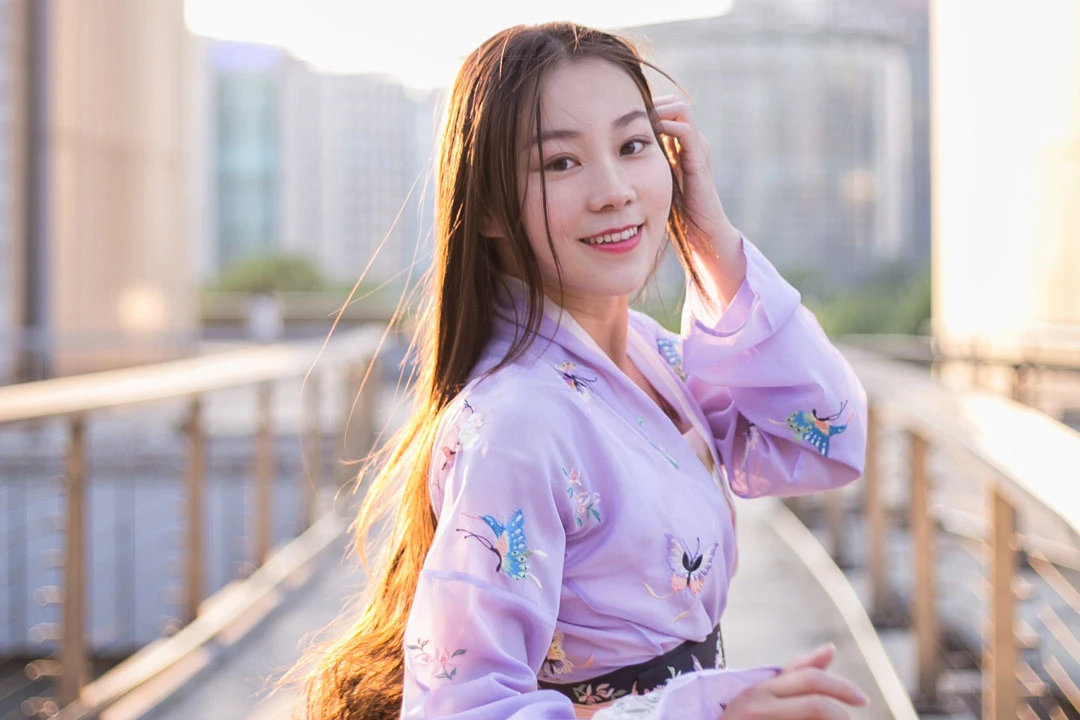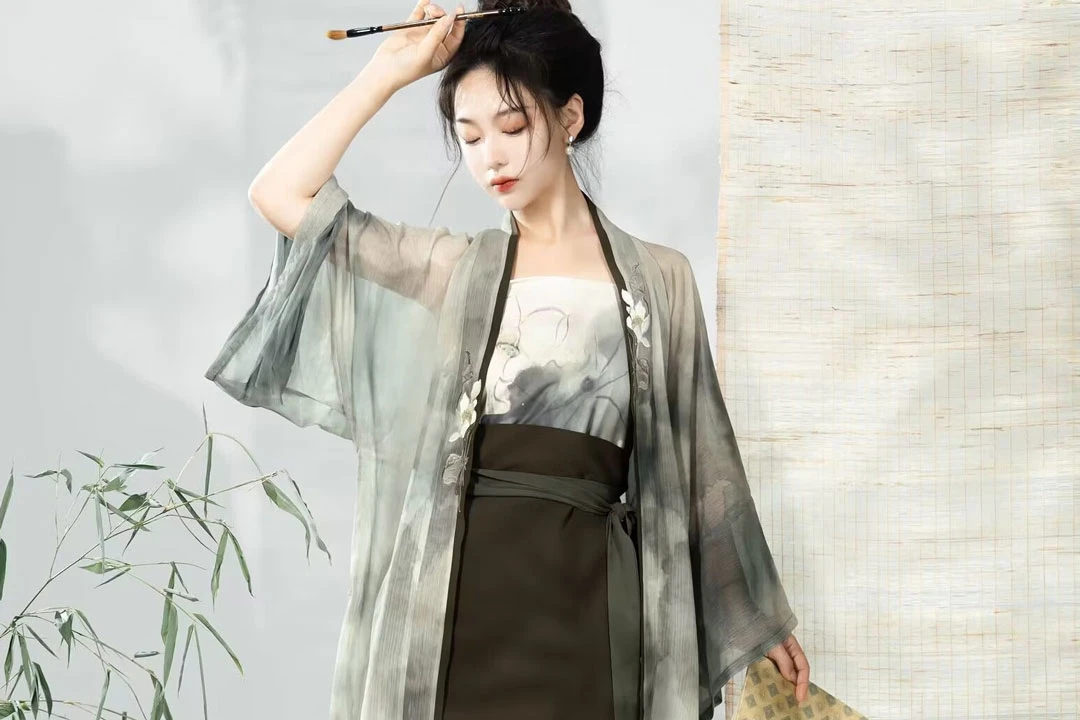For those newly discovering the refined beauty of traditional Chinese hanfu, the traditional dress recently revived in China, sticker shock often abounds. Luxury hanfu houses promote intricately embroidered masterpieces costing thousands of dollars apiece – seemingly pricing the cultural trend beyond reach for regular folks. However, behind the extravagant designer market exists more affordable hanfu accessibility. By grasping what drives typical pricing and getting creative in sourcing, quality hanfu can be found at reasonable prices. In this article, we’ll talk about how to buy a cheap hanfu dress.
Comprehending High-End Hanfu Pricing
In major Chinese cities, the most visible hanfu boutiques cater to wealthy elites, the only ones able to routinely afford luxury pricing. Top hanfu fashion designers like Guo Pei create one-of-a-kind haute couture pieces embellished in rare fabrics, beading, and stitching that cost $10,000 per item or more. Their works are treated as high art and status symbols rather than clothing.
Even mass-produced hanfu advertised to middle class Chinese regularly runs $500 and beyond for a basic silk robe or jacket. Large e-commerce sites show unadorned hanfu starting around $100, but most quality pieces quickly reach $300 to $800 based on style details.
These astronomical costs place fine hanfu outside attainable reach for not just average Chinese incomes but international enthusiasts too. What factors underpin the dampening truth that hanfu, despite representing a collectively shared heritage, remains primarily a luxury?

Why is Hanfu so expensive? Reasons Behind High Pricing
Several key reasons explain the lofty pricing dynamics that have crystallized around hanfu, situating it more as haute couture than everyday wear:
- Labor intensity – The meticulous hand-embroidery, beading, pleating, and stitching involved requires master artisan skills built over years. Such intricate details and precision cannot be easily replicated by machine.
- Rare fabrics – Top quality hanfu rely on imported specialty silks, brocades, and lace with limited production. These textiles cost exponentially more than common materials.
- Low production capacity – Most quality hanfu is tailored to order in small ateliers rather than mass-produced, limiting economies of scale.
- Designer exclusivity – Leading hanfu houses intentionally restrict output and promote luxury exclusivity, keeping supply lower than demand.
- Demand outweighing supply – The hanfu resurgence has vastly outpaced the availability of skilled tailors and artisans to produce authentic pieces, catalyzing scarcity value.
- High retail markups – Hanfu designers and boutiques apply large profit margins expected of luxury fashion, especially for perceived wealthier international buyers.
- Speculation and investment – Some wealthy Chinese buy high-end hanfu as stock assets, expecting future meteoric value increases due to scarcity.
These myriad factors intertwine to position hanfu as a luxury for the Chinese economic elite. Changing this narrative requires initiatives that increase accessibility without diluting heritage craftsmanship. The good news? Quality affordable hanfu can be found by reconsidering where to look.
Discovering Well-Made, Value-Conscious Hanfu
For newcomers daunted by five-figure price tags at high-end flagship stores, bypassing the world of luxury branding opens doors to reasonably-priced hanfu. Seeking out direct channels and localized sources takes more effort but uncovers value:
- Look beyond big brands – Smaller independent hanfu studios offer tailored pieces with less markup. Partner directly with specialty artisans.
Avoid ornament extras – Heavily ornamented hanfu costs exponentially more. Stick to classically styled silk pieces with minimal embellishment. - Consider partial machine production – Combining machine construction with delicate hand-finishing reduces labor costs.
Shop online deals and resale – E-commerce sites like Taobao offer discounted overstock sales on past season styles, or resale of quality secondhand. - Buy direct from studios – Well-reviewed hanfu makers often sell directly through their own e-commerce sites at wholesale pricing.
- Learn DIY skills – Getting hands-on experience sewing basic styles illuminates the craft. Altering cheaper garments also works.
- Repurpose old cheongsams – Upcycling vintage Chinese dresses offers recycled quality fabrics.
- Ask locals to source on your behalf – Friends visiting China can access wholesale markets abroad don’t reach.
With strategic sourcing, those on budget limitations can find decent hanfu for $50-$200 to participate in celebrating a shared cultural heritage. This just requires reevaluating the engrained perception of hanfu as strictly luxury status wear.
How Much Does A Modern Hanfu Cost in China?
Here are some details on typical pricing for modern hanfu in China:
- Mass-market hanfu for normal Chinese consumers generally ranges from around $50 for a simple polyester piece to $200-300 for a basic silk style.
- Higher end silk hanfu with delicate embroidery or other intricate details often costs $200-$500 from specialty studios and designers.
- Truly high-end luxury brand hanfu made of rare silks and embellished with lavish embroidery, beading, or dyes can cost $3000-$10,000 or even more per piece from exclusive haute couture houses.
So in summary, most modern hanfu produced today targets the daily and casual hanfu styles and ranges between $50-$200. With some effort, beginner-friendly hanfu can be purchased or crafted for under $100.
Preserving Heritage Craft While Expanding Access
The path forward entails making hanfu’s finely-honed tailoring traditions more accessible without compromising their longevity. Multipronged initiatives can expand affordability and democratize access:
- Offer beginner DIY kits and courses to get started in hanfu’s artistry fundamentals at low cost and scale up skills over time.
- Enable direct order from regional hanfu hubs and independent artists to bypass high retail markups. Assist their scaling capabilities.
- Develop high-quality synthetic versions of ornate fabrics using tech innovation to lower costs while retaining beauty.
- Partner with ethical manufacturing collectives to develop fairly-compensated production of simpler styles.
- Subsidize hanfu purchases for economically disadvantaged Chinese citizens to enable cultural participation.
With creativity and compassion, the splendid craftsmanship that makes hanfu exceptionally prized can be preserved while sharing its cultural empowerment more broadly. The heritage belongs to all.

